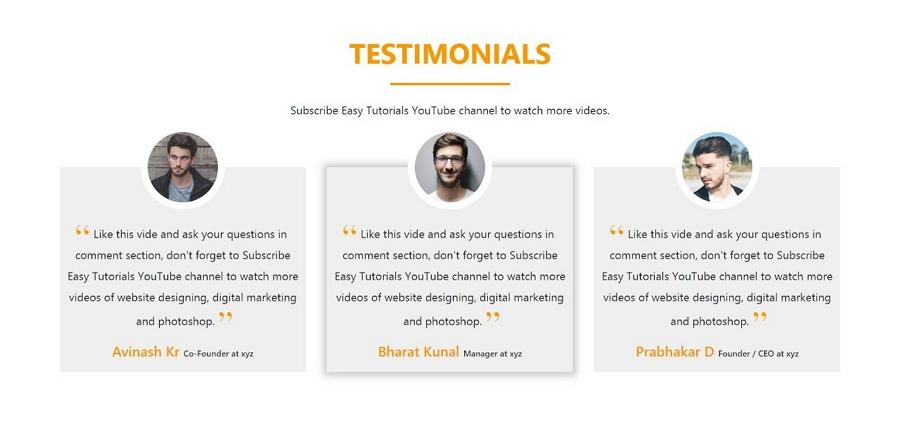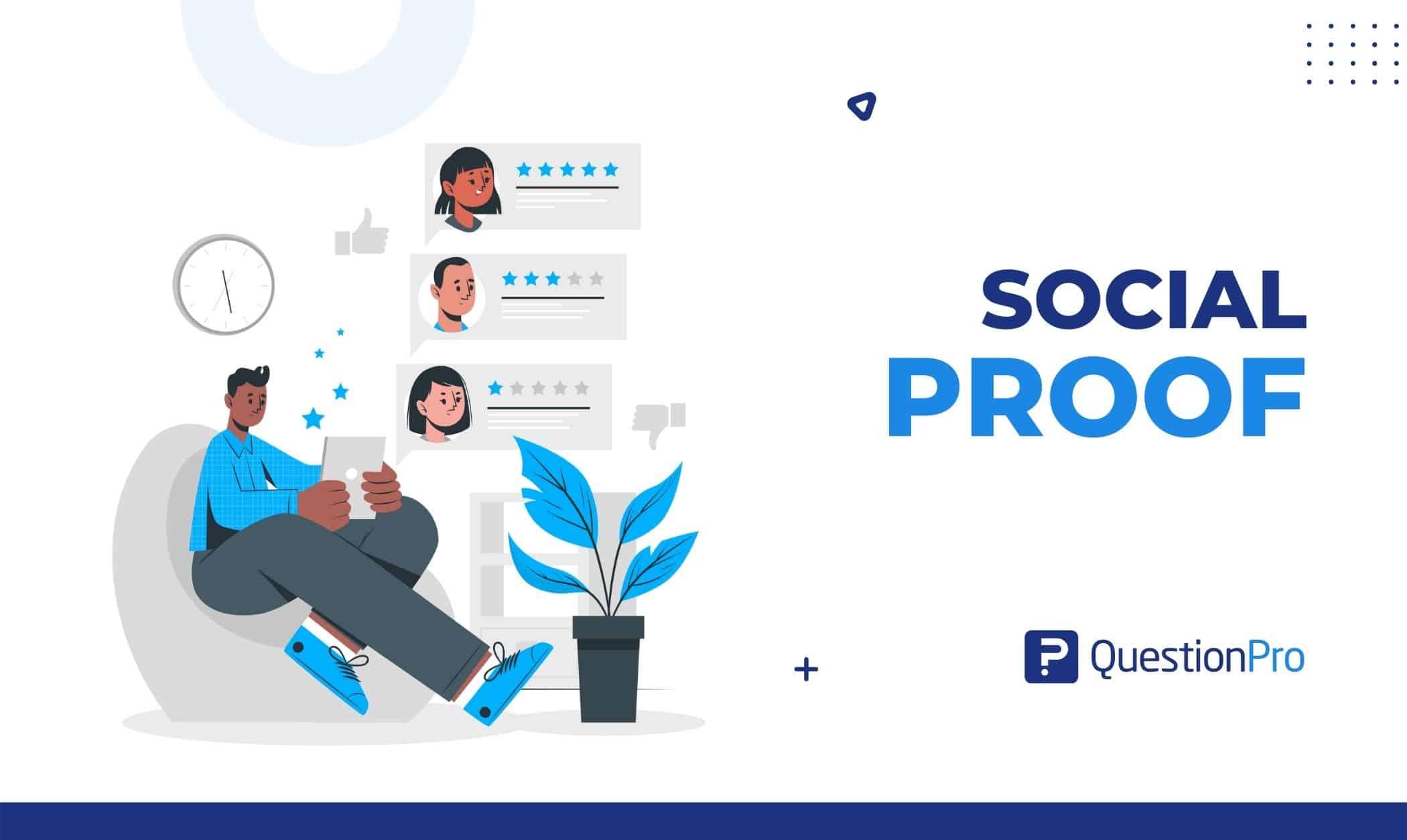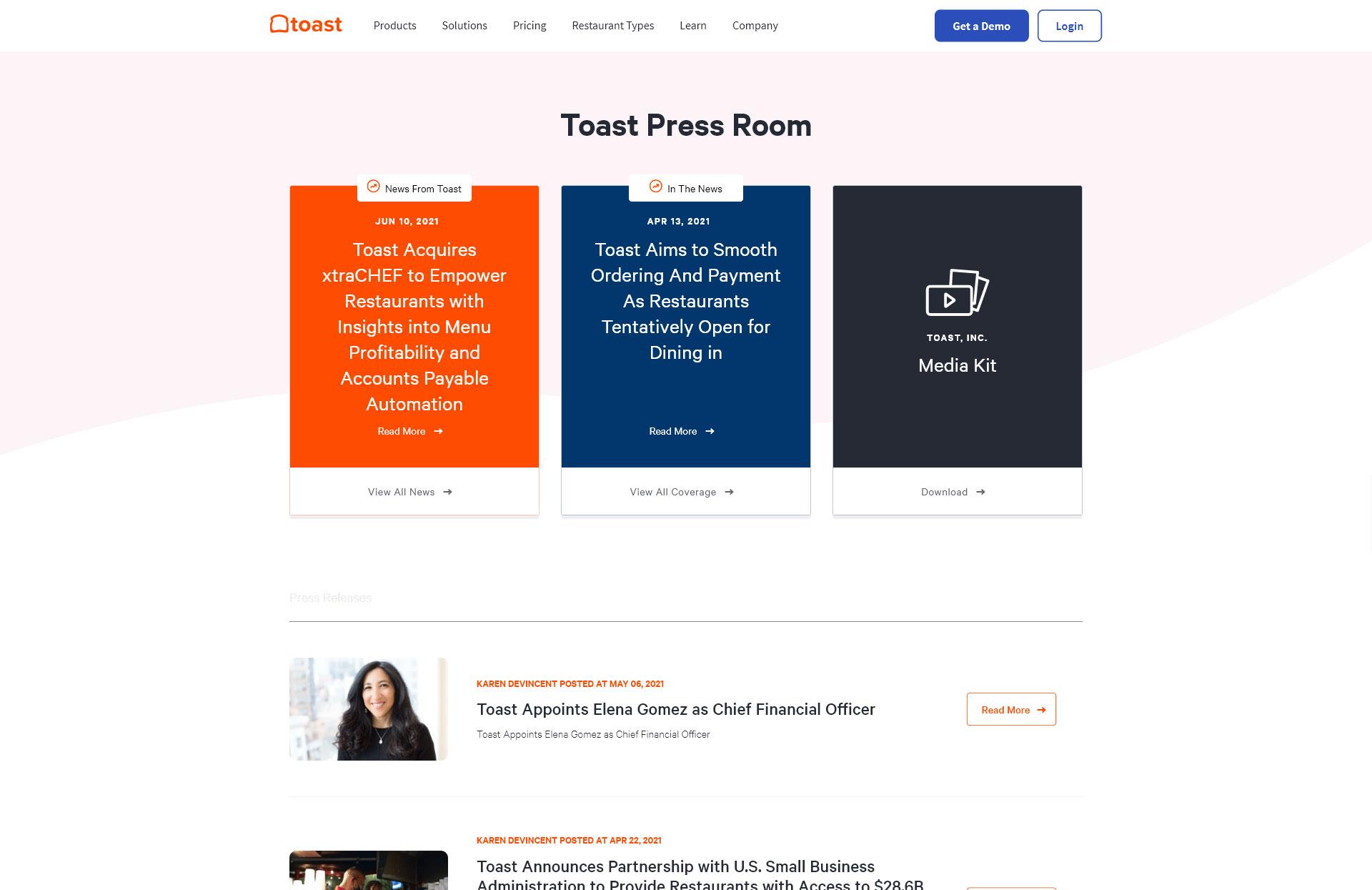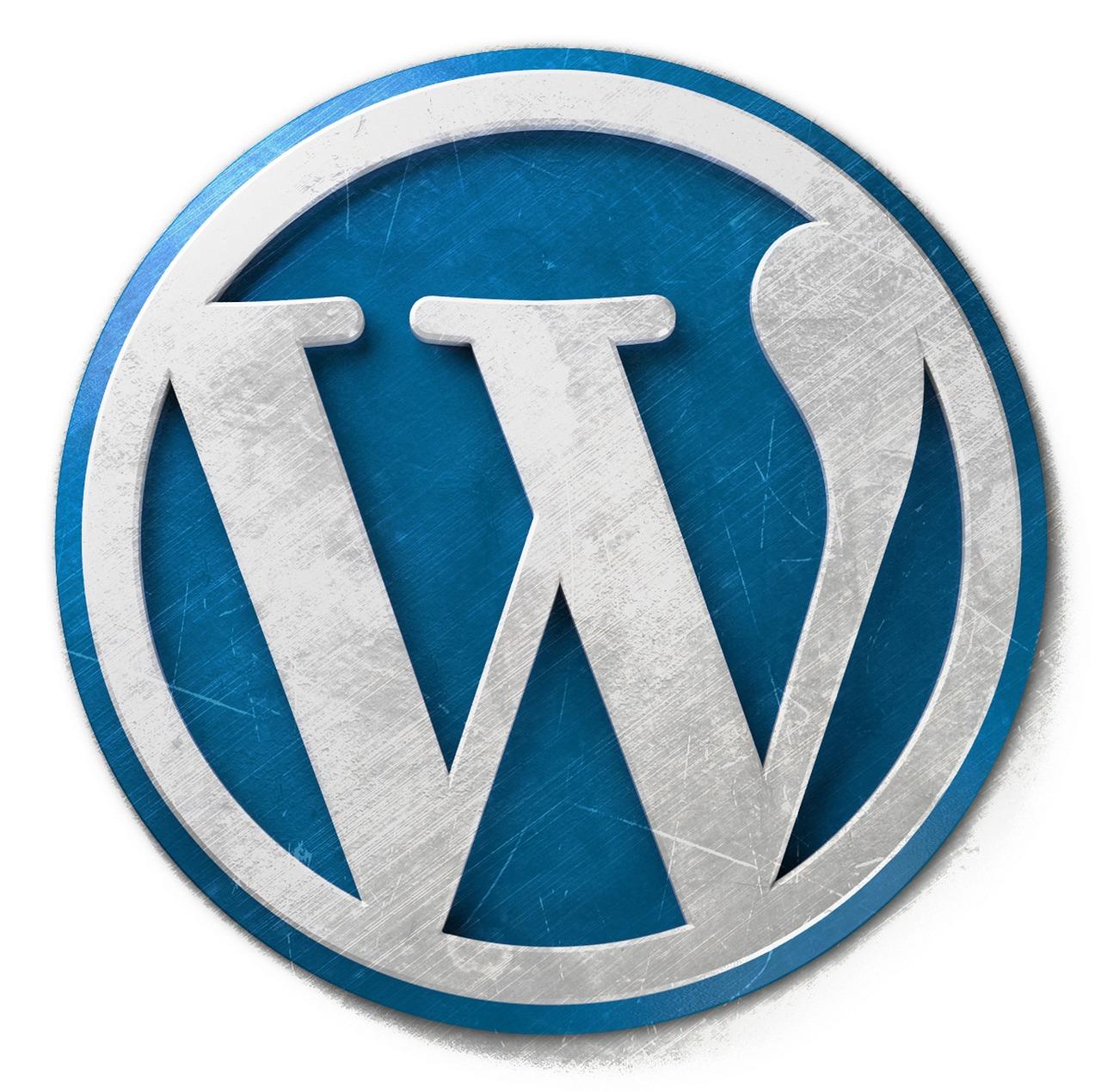Unlocking the Secrets of Effective Press Pages: 7 Inspiring Examples to Elevate Your Brand
Are you ready to take your brand’s visibility to the next level? Your press page could be the secret weapon you didn’t know you needed. Think of it as a digital handshake, a place where journalists, bloggers, and potential partners can find everything they need to know about you at a glance. But let’s be honest—many press pages fall flat, missing the mark in both style and substance.
That’s why we’ve put together this article showcasing seven stellar press pages that get it right. Each example is a treasure trove of inspiration, packed with unique elements that you can adapt for your own site. From eye-catching visuals to compelling storytelling, these pages don’t just inform; they engage and captivate. So, whether you’re a startup looking to make your mark or an established brand seeking a refresh, get ready to discover what works and how you can steal the best ideas from each. Let’s dive in and transform your press page into a powerful tool for your brand!
Discovering the Power of a Well-Designed Press Page
When it comes to building your brand’s presence, a press page is an often-overlooked gem. It’s not just a collection of press releases; it’s a dynamic tool that can shape public perception and foster relationships with the media and your audience. An effective press page serves as a central hub for journalists, bloggers, and potential collaborators, offering everything they need to tell your story accurately and engagingly.
To maximize the impact of your press page, consider incorporating these key elements:
- Media Kit: Provide downloadable high-resolution images, logos, and bio information for easy access.
- Press Releases: Archive your press releases in chronological order to showcase your brand’s journey and milestones.
- Contact Information: Ensure that journalists can easily find your PR contact details to foster communication.
- Featured Articles: Highlight media coverage or articles that showcase your brand in a positive light.
- Social Media Links: Encourage visitors to connect with you on various platforms for real-time updates.
Another effective strategy is to create a dedicated section for FAQs. This can preemptively address common inquiries from the press, saving everyone time and ensuring accurate representation. A well-crafted FAQ can clarify your brand values, mission, and recent developments, reinforcing your narrative in the eyes of the media.
Moreover, consider embedding a simple table that outlines your brand’s key information, such as:
| Attribute | Details |
|---|---|
| Founded | 2015 |
| Headquarters | San Francisco, CA |
| Website | www.example.com |
| Key Offerings | Innovative Tech Solutions |
ensure that your press page is visually appealing and easy to navigate. Use a clean design with ample whitespace, clear headings, and intuitive links. This not only helps in retaining visitors but also enhances the likelihood that journalists will find what they need quickly. After all, a well-designed press page is not just functional; it’s a reflection of your brand’s professionalism and commitment to transparency.
Unpacking the Essentials of Effective Media Kits
Creating an effective media kit is essential for fostering strong relationships with journalists and influencers. A well-crafted media kit not only conveys your brand identity but also serves as a toolkit for media professionals to easily access the information they need to tell your story. Here are some key components to consider:
- Brand Story: Share your origin story and mission in a compelling narrative. Make it relatable to engage your audience.
- Visual Assets: Include high-resolution logos, images, and videos that reflect your brand’s essence. Visuals can significantly enhance the appeal of your kit.
- Key Statistics: Highlight metrics that showcase your brand’s impact, such as audience reach, engagement rates, or customer testimonials. Numbers can provide undeniable proof of your value.
- Press Releases: Provide your latest press releases to keep journalists informed about your recent developments and announcements. This ensures they have the most current information at their fingertips.
- Contact Information: Always include direct contact details for your PR representative. Streamlining communication can lead to quicker media coverage.
Another effective strategy is to segment your media kit for different types of media outlets. For instance, if you are targeting digital media, consider adding sections that focus on your social media presence and online engagement strategies. Conversely, for traditional media, emphasize your brand’s history and milestones. Tailoring content can make your media kit more appealing to specific audiences.
Don’t underestimate the power of aesthetics. A well-designed media kit can captivate attention and leave a lasting impression. Use consistent fonts, colors, and layouts that align with your brand identity. Consider creating a PDF version for easy download, ensuring that all links are functional and direct to the right resources. This not only improves user experience but also reflects professionalism.
| Feature | Importance |
|---|---|
| Brand Story | Engages and connects emotionally |
| Visual Assets | Enhances storytelling through imagery |
| Statistics | Builds credibility and trust |
| Press Releases | Keeps media updated on news |
| Contact Info | Facilitates quick communication |
keep your media kit updated. As your brand evolves, so should the information you provide. Regularly revisiting and refreshing your media kit ensures that you remain relevant and that your messaging aligns with your current goals. Stay proactive in your media outreach, and watch as opportunities unfold.
How to Craft Compelling Headlines that Grab Attention
Crafting headlines that capture the essence of your content while compelling readers to click requires a blend of creativity and strategy. One effective technique is to use power words—terms that evoke emotion or curiosity. Consider incorporating words like “ultimate,” “essential,” or “secrets” to pique interest. These words not only grab attention but also set expectations about the value of your content.
Another strategy is to ask questions in your headlines. This approach engages readers by prompting them to seek answers within your content. For instance, “Are You Making These Common Mistakes?” creates a sense of urgency and encourages the audience to reflect on their own practices. Use questions that relate directly to the pain points or interests of your target audience to increase relevance.
In addition to emotional appeal and engagement, clarity is paramount. A compelling headline should provide a clear indication of what the reader can expect. Instead of vague phrases, opt for specificity. For example, instead of “Tips for Better Writing,” consider “10 Essential Writing Tips to Capture Your Audience’s Attention.” This not only specifies the number of tips but also directly addresses the benefit to the reader.
| Techniques | Examples |
|---|---|
| Power Words | “Unlock the Secrets to…” |
| Asking Questions | “What’s Holding You Back?” |
| Be Specific | “5 Proven Strategies to Boost Your Sales” |
don’t underestimate the importance of A/B testing your headlines. By experimenting with different variations, you can gather data on what resonates most with your audience. Use tools and platforms that allow you to track engagement metrics to refine your approach over time. Remember, the headline is often the first—and sometimes the only—chance you have to make an impression, so invest the time to perfect it.

The Art of Visuals: Enhancing Your Press Page with Smart Design
In the fast-paced world of online content, having a visually appealing press page is crucial for capturing the attention of journalists and influencers. A well-designed press page can act as a powerful tool in your PR arsenal, making it easier for media representatives to access your brand’s story, assets, and contact information. Here are some key elements to consider when enhancing your press page through smart design:
- Clear Navigation: Ensure your press page is easy to navigate. Use a straightforward layout that allows visitors to find what they need without frustration. Consider incorporating a sticky menu or breadcrumbs to enhance user experience.
- High-Quality Imagery: Utilize professional images that represent your brand authentically. Images should be optimized for web use—high enough in quality to look great but not so large that they slow down the page.
- Consistent Branding: Maintain brand consistency through color schemes, fonts, and styles. This not only reinforces your brand identity but also helps in building trust with visitors.
- Media Kits: Include downloadable media kits that contain logos, press releases, and high-resolution images. This makes it easier for journalists to access essential materials without having to reach out for them.
- Testimonials and Case Studies: Highlight positive feedback or successful partnerships. This social proof can significantly enhance your credibility and appeal to media professionals.
To illustrate these points, let’s take a look at some notable press pages and what you can borrow from each:
| Company | Design Element to Steal |
|---|---|
| Company A | Interactive Media Kit |
| Company B | Engaging Video Content |
| Company C | Customizable Press Releases |
| Company D | Media Contact Form |
By integrating these design features into your press page, you not only enhance its visual appeal but also create a more functional and accessible resource for media professionals. Remember, the art of visuals isn’t just about looking good; it’s about creating a seamless experience that encourages interaction and engagement with your brand.

Building Trust with Testimonials and Case Studies
When it comes to establishing credibility, testimonials and case studies are among the most powerful tools you can leverage on your press page. They provide social proof that not only validates your brand’s claims but also resonates with potential clients on a personal level. By sharing authentic experiences and results, you can create a narrative that speaks directly to the needs and concerns of your audience.
Consider featuring customer testimonials that highlight specific aspects of your service or product. This can include:
- How your solution solved a particular problem
- The measurable results they achieved
- Any emotional impact your service had on their business
Adding a diverse range of testimonials can bolster your credibility even further. Aim for a mix that reflects different demographics, industries, and use cases. This way, potential clients can see themselves in the stories you share, making it easier for them to relate and trust your brand.
Case studies take this concept a step further by providing in-depth analyses of the challenges faced by your clients and the solutions your brand offered. A well-structured case study typically includes:
| Element | Description |
|---|---|
| Client Background | Brief overview of the client’s business and industry. |
| Challenge | Specific issues the client was facing before your intervention. |
| Solution | The approach and strategies your team implemented. |
| Results | Quantifiable outcomes and benefits achieved post-implementation. |
By presenting a clear narrative with these elements, you not only illustrate your expertise but also build a connection with potential customers. They are more likely to trust a brand that has successfully helped others in similar situations.
don’t underestimate the visual impact of testimonials and case studies. Incorporating images, quotes, or even video snippets can enhance engagement and draw the eye. A well-designed testimonials section can guide visitors through their decision-making journey, ultimately leading to higher conversion rates and a stronger trust in your brand.
SEO Strategies to Boost Your Press Page Visibility
To elevate your press page visibility, implementing effective SEO strategies is essential. A well-optimized press page not only attracts media attention but also enhances your brand’s overall online presence. Here are key strategies to consider:
- Keyword Optimization: Research relevant keywords that potential journalists or visitors might use to find press materials. Incorporate these keywords naturally throughout your press page, including in headings, image alt texts, and meta descriptions.
- High-Quality Backlinks: Engage in outreach to encourage reputable websites to link back to your press page. This not only drives traffic but also signals to search engines that your content is credible and valuable.
- Mobile-First Design: Ensure your press page is responsive and looks great on mobile devices. A significant portion of users access content via smartphones, and search engines prioritize mobile-friendly sites.
- Rich Media: Include engaging multimedia elements such as videos, images, and infographics that can enrich the user experience. Make sure to optimize these elements with relevant tags and descriptions.
- Social Sharing Buttons: Incorporate easily accessible social media sharing buttons to encourage visitors to share your press page. Each share can enhance visibility and lead to organic traffic growth.
In addition to these strategies, consider the following tactics to further enhance your press page’s SEO:
| Strategy | Description |
|---|---|
| Regular Updates | Keep your press page current with the latest news, press releases, and media mentions. |
| Clear Navigation | Ensure your press page is easy to navigate, making it simple for users to find the information they need. |
| Press Kits | Offer downloadable press kits that include essential brand information, images, and contact details for journalists. |
By focusing on these SEO strategies, you can significantly boost the visibility of your press page, making it a go-to resource for journalists and media outlets. Remember, the goal is to create a user-friendly experience that not only informs but also engages your audience.

Engaging Your Audience with Interactive Elements
To truly captivate your audience, integrating interactive elements into your press page can make a world of difference. Interactive features not only enhance user engagement but also provide a memorable experience that keeps visitors coming back. Here are some ideas to consider:
- Quizzes and Polls: Adding a quiz related to your brand or industry can spark interest. For instance, a fun quiz about the latest trends in your field can drive traffic and encourage sharing.
- Embedded Videos: Take advantage of multimedia by embedding videos that showcase your company’s journey, product demos, or testimonials. This not only holds attention but also humanizes your brand.
- Interactive Infographics: Instead of static images, use interactive infographics that allow users to click for more information. This fosters a deeper understanding of your data and statistics.
Another effective way to engage your audience is through dynamic content. Personalization can go a long way. For instance, tailoring the information displayed based on user behavior can create a customized experience. Consider a small pop-up that asks visitors about their interests, and then adjust the displayed content accordingly. This approach not only makes users feel valued but also enhances the relevance of your message.
Additionally, incorporating social sharing buttons can amplify your reach. Make it easy for users to share press releases or articles with one click. Highlighting shareable quotes or compelling visuals can encourage shares on their social platforms, effectively acting as free advertising for your brand.
| Interactive Element | Benefit |
|---|---|
| Quizzes | Increases engagement and shares |
| Videos | Enhances emotional connection |
| Infographics | Makes complex data digestible |
| Personalization | Improves relevance and user experience |
| Social Buttons | Expands reach and visibility |
Ultimately, the goal is to create a press page that resonates with your audience. By weaving in these interactive elements, you’re not just presenting information; you’re crafting an engaging narrative that draws your visitors in. This approach transforms your press page from a mere informational hub into a vibrant, interactive experience, making it a crucial tool in your branding arsenal.

Maximizing Social Proof to Increase Credibility
In the digital age, social proof has become a powerful catalyst for building credibility and trust. When visitors land on your press page, they are often looking for validation that you are a reputable and trustworthy entity. Incorporating elements of social proof can significantly enhance your credibility, making it easier for prospective customers or partners to take the leap into engagement. Here are some effective strategies to consider:
- Featured Media Mentions: Showcase logos of reputable publications that have featured your brand. This not only highlights your media presence but also associates your brand with authority.
- Testimonials: Include quotes from satisfied clients or industry leaders. Authentic testimonials serve as endorsements, reinforcing the quality of your products or services.
- Case Studies: Present detailed case studies that outline specific problems your service solved for clients. This real-life evidence can bolster your claims and showcase your effectiveness.
- Social Media Love: Display metrics from your social media platforms, like follower counts or engagement rates. These numbers act as modern-day word-of-mouth, proving that your audience trusts and values your brand.
Another compelling way to utilize social proof is through user-generated content. Encourage customers to share their experiences with your product on social media, and feature these posts on your press page. By displaying real users enjoying your offerings, you create a relatable image that resonates with potential customers.
Furthermore, don’t underestimate the power of statistics. People are drawn to numbers that demonstrate impact. Consider creating a simple table that showcases key metrics related to your success, such as:
| Metric | Value |
|---|---|
| Media Mentions | 250+ |
| Happy Clients | 2,000+ |
| Social Media Followers | 50,000+ |
By embedding these elements into your press page, you not only enhance your credibility but also create a narrative that potential partners and customers can easily trust. The key is to be authentic and transparent, allowing your audience to see the genuine connections you’ve cultivated in your industry.

Creating a Seamless User Experience for Journalists
is crucial in ensuring that they can easily access the information they need. A well-structured press page can serve as a powerful tool for communication, providing journalists with everything from press releases to multimedia assets, all in one convenient location.
Here are some essential elements to consider when designing a press page that caters specifically to journalists:
- Clear Navigation: Ensure that your press page has a straightforward menu that allows journalists to find press releases, media kits, and contact information without any hassle.
- Search Functionality: Incorporate a search bar to help journalists quickly locate specific information or previous press releases. This feature can save time and enhance their experience immensely.
- Downloadable Resources: Provide easy access to downloadable images, logos, and PDFs. Consider using a visually appealing layout that allows for quick downloads, as this can be a significant time-saver for journalists on tight deadlines.
- Responsive Design: Optimize your press page for mobile devices. Journalists often work on the go, so a mobile-friendly design ensures they can access your resources from anywhere.
Additionally, consider implementing a section that highlights your company’s latest news and achievements. This not only keeps journalists informed but also establishes your brand as a credible source of information. A well-maintained blog or news section can provide valuable context and updates that journalists can reference in their stories.
| Feature | Benefits |
|---|---|
| Media Kit | Provides essential brand assets for easy access |
| Press Releases Archive | Enables quick reference to past announcements |
| Contact Information | Direct line to PR representatives for inquiries |
| Social Media Links | Encourages sharing and engagement with your brand |
make sure to include a section for journalist feedback. A simple form where they can express their thoughts about your press resources can provide invaluable insights. This will not only enhance your relationship with journalists but also help you improve your offerings based on their needs and preferences.

Learning from the Best: Key Takeaways from Each Example
When it comes to crafting an engaging press page, learning from industry leaders can provide invaluable insights. Here are some key takeaways from notable examples that you can adapt for your own page.
Visual Appeal: A visually striking press page can capture attention instantly. For instance, many successful brands utilize high-quality images and a clean layout. Consider implementing:
- Bold imagery that represents your brand
- A consistent color scheme that aligns with your branding
- Whitespace to enhance readability
Comprehensive Media Kits: Great press pages offer comprehensive media kits that make it easy for journalists to access necessary information. Include:
- High-resolution logos and images
- A detailed company background
- Recent press releases and news articles
Easy Navigation: Simplifying navigation ensures that users can find what they need quickly. Many successful pages feature:
- Clear, organized sections for different types of media
- A search bar to streamline the information retrieval process
- Links to social media and contact information clearly displayed
Call-to-Action: Don’t underestimate the power of a strong call-to-action. Encourage engagement by:
- Inviting users to subscribe to newsletters or updates
- Providing easy access to shareable content for social media
- Linking to a form for interview requests or collaboration proposals
By analyzing these elements from leading press pages, you can create a space that not only informs but also captivates your audience. Implementing these strategies can elevate your brand’s visibility and foster meaningful connections with the media.
Frequently Asked Questions (FAQ)
Q&A: 7 Press Page Examples (+ What to Steal from Each)
Q1: Why should I care about press pages for my business?
Absolutely, you should! A well-crafted press page can be a game changer for your brand. It’s your opportunity to control the narrative around your business and provide journalists with everything they need to tell your story. Plus, a solid press page boosts your credibility, showcasing your achievements and making it easier for media outlets to cover you.
Q2: What makes a press page effective?
Great question! An effective press page combines clarity, accessibility, and engaging content. It should include high-quality press releases, company background information, media contacts, and eye-catching visuals. Think of it as your digital press kit that captures the essence of your brand. Remember, simplicity is key—journalists should find what they need quickly and effortlessly.
Q3: Can you give me an example of a standout press page?
Absolutely! Let’s take a look at Airbnb’s press page. They utilize a clean, organized layout that highlights their latest news, media resources, and stunning images. What you can steal from them is the way they categorize information. By organizing content into sections, it becomes easy for journalists to locate what they’re searching for.
Q4: What about the design aspect? Is that important?
Design is crucial! An attractive press page invites readers in and keeps them engaged. Look at how Nike employs bold visuals and strong graphics to tell their story. Consider using high-quality images and infographics to convey your brand’s message. Visual appeal can make a significant difference in capturing attention and keeping it focused on your content.
Q5: Are there specific features I should include on my press page?
Yes! Here are a few must-haves: a brief company overview, recent press releases, high-res images, logos, and contact information for your media relations team. Also, consider adding a media kit for download. The more comprehensive and user-friendly your page is, the more likely it is to be used by journalists.
Q6: How do I ensure my press page gets noticed?
Search engine optimization (SEO) is your friend! Use relevant keywords, optimize your images, and make sure your press page is easy to navigate. Be proactive by sharing your press page on social media and linking to it in your email communications. The more people who see it, the better your chances of getting covered!
Q7: What should I avoid when creating my press page?
Avoid clutter! Too much information can overwhelm visitors and make it hard for them to find what they need. Keep content concise and relevant. Additionally, steer clear of jargon that might confuse journalists. Remember, clarity and simplicity should always be your guiding principles.
Q8: What’s a final tip for crafting an outstanding press page?
Stay authentic! Your press page should reflect your brand’s personality and values. Don’t be afraid to showcase your unique story—this is what sets you apart from the competition. Incorporating a personal touch will resonate with journalists and make them more inclined to write about you. So, be genuine and let your brand shine!
By exploring these examples and implementing these tips, you’ll be well on your way to creating a press page that not only attracts attention but also generates meaningful media coverage for your business. Happy crafting!
In Conclusion
As we wrap up our journey through the world of press pages, it’s clear that a well-crafted press page can do wonders for your brand. The examples we explored highlight the power of clarity, creativity, and connection in communicating your story to the media. Whether you’re a startup looking to make your mark or an established brand seeking to refresh your image, there’s always something to learn from the best in the business.
So, what’s next for you? Take a moment to reflect on the elements that resonated with you from the examples we discussed. Are there design elements you want to incorporate? Maybe a catchy tagline or a unique approach to showcasing your media assets? Don’t hesitate to experiment and tailor these ideas to fit your brand’s voice and mission.
Remember, your press page is often the first impression you make on journalists and potential partners. Make it count! Now, roll up your sleeves, get creative, and start crafting a press page that not only attracts attention but also tells your story in a compelling way. Happy building!


